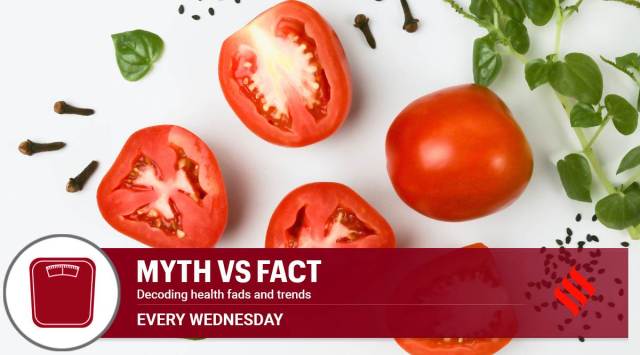Tomato price hike: Can you do without it in your diet? What are alternatives?
You can. Nutritionally speaking, Indians lose much of the lycopene in tomatoes while cooking on high heat. So anyway we are not losing much. Similar nutritional value can be derived from other food sources, some of which can be used in your daily cooking, says Ritika Samaddar, Regional Head, Nutrition And Dietetics, Max Super Speciality Hospital, New Delhi
 The clear substitutes for tomato are curd, tamarind, vinegar, amla, lemon juice and kokum. (Source: Unsplash)
The clear substitutes for tomato are curd, tamarind, vinegar, amla, lemon juice and kokum. (Source: Unsplash) Given the skyrocketing prices of tomatoes, many of us are worried about what to put out on the table. But truth be told, in India, much like onion, tomatoes have become a part of the food preparation ritual because of their colour and flavour rather than their nutritional requirements. Unlike Mediterranean cuisine, which uses them blended and pureed raw, we really use a small bit in comparison. So nutritionally speaking, you are not missing much when it comes to tomatoes. As for their nutritional value, they can be derived from other food sources, which can be healthy for your body. So from a nutritionist’s point of view, it’s not like your life depends on tomatoes.
First, let’s look at the nutritional profile of tomatoes. They are high in lycopene, which studies have found to be good in managing blood cholesterol and triglycerides. Lycopene has been proven to have anti-cancer, antioxidant, anti-inflammatory and antidiabetic properties. In fact, in Mediterranean countries, tomatoes are had with olive oil simply because they boost the absorption of lycopene. Tomatoes are rich in potassium, vitamins B, C and E and antioxidants like beta carotene, lutein, flavonoids, phenolic acids and tannins.
Now all of this can be sourced from many other food sources. For its tanginess and sourness, the clear substitutes for tomato are curd, tamarind, vinegar, amla, lemon juice and kokum. For gravy colour, some people add a bit of squashed beetroot or red bell pepper.
Let’s look at lycopene, which clears toxins from the blood, prevents oxidation of LDL or bad cholesterol and reduces oxidative damage in cells. For lycopene, one can look at foods of colour like carrots, mangoes, grapefruit, watermelon, guava and red cabbage. In fact, it is better to have lycopene from these other sources because cooking tomatoes on high heat anyway means a loss of lycopene content. So since we do not eat tomatoes raw as much as they do in Mediterranean countries, we can get lycopene from fruit sources without worrying about what to use in cooking.
Curd is a probiotic, has a low glycaemic index and glycaemic load, is known to increase HDL or good cholesterol as well as reduce blood pressure and hypertension, and helps in weight loss. Tamarind works on your liver, is high on hydroxy citric acid, which reduces your appetite by inhibiting amylase, an enzyme responsible for converting carbohydrates into fat, and stabilises blood sugar levels. Flavonoids present in tamarind lower LDL and raise HDL. Its potassium content can help keep your blood pressure in check.
The health properties of vinegar hardly need to be reaffirmed. But its use as a cooking ingredient is proven. It delays digestion, which controls blood sugar spikes and prolongs satiety, and is therefore good for diabetics. Its other actions are in slowing the production of glucose by the liver or ensuring more efficient use of insulin in people who are insulin-resistant. Vinegar impacts fat metabolism. A mice study found how acetic acid protected them from developing abdominal fat and prevented excess storage of fat in the liver. Vinegar contains polyphenols, which protect cells from oxidative stress. As for kokum, it is low in calories and fats, rich in fibre and contains all the vitamins and micronutrients that tomatoes have, vitamin A, vitamin B3, vitamin C, folic acid, calcium, iron, potassium, magnesium, manganese and zinc. So alternatives are many.
Photos
- 01
- 02
- 03
- 04
- 05































